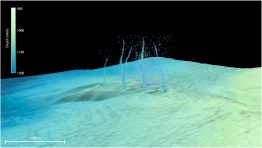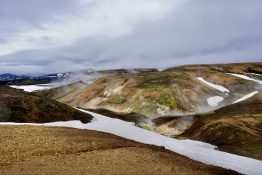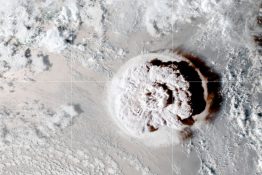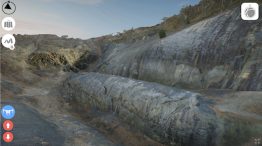The field of plate tectonics is not that old, and scientists continue to learn the details of earthquake-producing geologic faults. The Cascadia Subduction Zone — the eerily quiet offshore fault that threatens to unleash a magnitude-9 earthquake in the Pacific Northwest — still holds many mysteries. A study led by the University of Washington discovered seeps of warm, chemically distinct liquid shooting up from the seafloor about 50 miles off Newport, Oregon.
Read more at UW News »S1 E1: Ocean Acoustics with Shima Abadi and Rachel Aronson
Shima Abadi is Director of the Ocean Data Lab and an associate professor at the UW School of Oceanography. She also holds a joint appointment as an associate professor in the Mechanical Engineering Program at UW Bothell’s School of Science, Technology, Engineering & Math (STEM). Abadi’s intricate research primarily focuses on ocean acoustical signal processing, noise propagation in the ocean, machine learning in analyzing ocean ambient noise, and developing algorithms for analyzing large data sets collected by underwater networks.
Read more »Ice cores show even dormant volcanoes leak abundant sulfur into the atmosphere
Volcanoes draw plenty of attention when they erupt. But new research led by the University of Washington shows that volcanoes leak a surprisingly high amount of their atmosphere- and climate-changing gases in their quiet phases. A Greenland ice core shows that volcanoes quietly release at least three times as much sulfur into the Arctic atmosphere than estimated by current climate models.
Read more at UW News »Signals from the ionosphere could improve tsunami forecasts
Research from the University of Washington shows that signals from the upper atmosphere could improve tsunami forecasting and, someday, help track ash plumes and other impacts after a volcanic eruption. A new study analyzed the Hunga Tonga-Hunga Ha’apai eruption in the South Pacific earlier this year. The Jan. 15, 2022, volcanic eruption was the largest to be recorded by modern equipment.
Read more at UW News »UW brings field geology to students with ‘Virtual Field Geology’
University of Washington geologists had set out to create computer-based field experiences long before the COVID-19 pandemic hit. Juliet Crider, a UW associate professor of Earth and space sciences, first got a grant from the National Science Foundation to send a former graduate student and a drone to photograph an iconic Pennsylvania geological site and pilot a new approach to field geology.
Read more at UW News »





